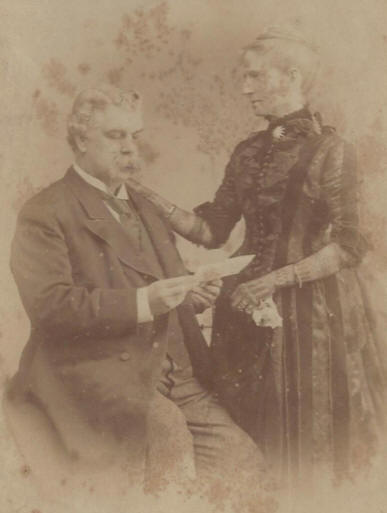


Lousada Barrow was the 4th son of Simon Barrow of Bath, and married Piercy McDonald in 1845. They had 6 children.
An interesting link between his family and the family of his brother Samuel Barrow #226 lies in the fact that his son-in-law Major-General Boyce Albert Combe #328 (who married Helen Edith Barrow #327) was a second cousin of Charles Louis Combe #999 (who married Margaret Louisa Kemp #686 widow of Samuel Barrow #226). This connection was discovered with the assistance of Charlotte Broadbent and the Combe Family Tree on ancestry.com.
His son Percy Harry Stanley Barrow 1848-86 #324 died in Cairo.
Barrow achieved distinction in the field and as Chief Commissioner of Oudh Province. He is buried at Ryde Cemetery. He had a son Lt-Col Frank Barrow b1845 #1097, who was a cousin of Tony Harding's great grandfather Frank Hunter Barrow 1847-1917 #331; curiously and no doubt confusingly, these two cousins - both named Frank - had similar schooling (both went to Bruton School and later Cheltenham College) followed by parallel careers in India retiring in 1896 and 1894 respectively (details from India Office records).
The mosque of Safdarjung's tomb was completed in 1754, the last great Mogul building in India (ref 118). This monument is in Delhi, and built to honour a Governor of Oudh. Safdarjung was a Persian nobleman from Nishapur in Iranian Khorasan and in the late 17th century came to India, married into the Mogul aristocracy and succeeded his father as Governor. His palace was in Lucknow, where the statue of Lousada Barrow is located.
His time as Governor was at the peak of Mogul power - upon arriving in India Aurangzeb was still Emperor, but by the time of Safdarjung's death the Persian Nadir Shah was gone with accumulated riches and 3 Emperors murdered. Delhi was left a city of ruins.